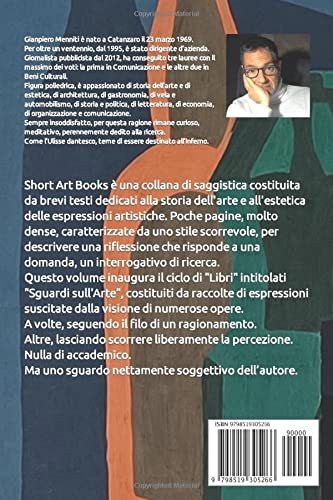#lucia greco
Text
Lucia was playing chess while everyone else was playing checkers. She is the IT girl!


#the white lotus#white lotus#lucia greco#arrivederci#simona tabasco#mia#beatrice grannò#albie di grasso#adam dimarco#theo james#ethan spiller#will sharpe#aubrey plaza#harper spiller#leo woodall#jack#dominic di grasso#michael imperioli
1K notes
·
View notes
Text

hate them all you want but they won
#the white lotus#white lotus#the white lotus fanart#white lotus fanart#lucia greco#mia and lucia#lucia and mia
370 notes
·
View notes
Text



#the white lotus#the white lotus hbo#the white lotus finale#white lotus#lucia greco#mia#lucia and mia#my italians babies#taylor jenkins reid#malibu rising
189 notes
·
View notes
Text







simona tabasco as lucia greco in the white lotus: sicily
primetime emmy award nominee for outstanding supporting actress in a drama series
#simona tabasco#lucia greco#the white lotus#the white lotus: sicily#supporting actress in a drama series#2023
16 notes
·
View notes
Photo



#i cant#dying#dead#cackling#hilarious#nailed it#same energy#poetic cinema#cinematic parallels#the lizzie mcguire movie#the white lotus#mia and lucia#hilary duff#lizzie mcguire#Beatrice Grannò#Lucia Greco#Simona Tabasco#gif#gifs#gifset#love#power of female friendship
90 notes
·
View notes
Text



#simona tabasco#the white lotus#lucia greco#i bastardi di pizzofalcone#doc nelle tue mani#she is so stunning#celebrity crush
61 notes
·
View notes
Text
Lucia honey I think u dropped this: 👑
#well played queen#well fucking played#the white lotus#the white lotus spoilers#Lucia Greco#Demora’s chats
65 notes
·
View notes
Text
White Lotus season 2 just ended and damn - these rich people truly and honestly have the most ridiculous first world problems 😂😂
I might be the minority but honestly I hated Tanya and I'm glad she's dead. I don't want Greg to get away with it though so I'm hoping we get a resolution to that
Anyways - this season was basically a lot of infidelity and most of the men (except for my son Albie), being various forms of misogynistic dickheads and toxic masculinity personified. So we have a new video up today talking about that!
Please watch and let us know what you think in the comments/tags - btw, why do you guys think Ethan didn't want to fuck Harper anymore?
youtube
#white lotus#white lotus season 2#harper#albie#albie di grasso#tanya mcquoid#harper x ethan#harper x daphne#daphne sullivan#portia#lucia greco#valentina#valentina x mia#cameron#cameron sullivan#aubrey plaza#theo james#will sharpe#meghann fahy#adam dimarco#dominic di grasso#haley lu richardson#jennifer coolidge#HBO#quentin#italy#cheating#toxic masculinity#ethan#podcast
24 notes
·
View notes
Text


meghann fahy, haley lu richardson and sabrina impacciatore at the SAG awards after party
#meghann fahy#haley lu richardson#sabrina impacciatore#the way sabrina is looking at them Im crying#this is so funny#sag awards#after party#the white lotus season 2#the white lotus#hbo#Daphne#portia#lucia greco#pop culture#celebrities
12 notes
·
View notes
Text
Simona Tabasco in The White Lotus = me having very gay feelings 🫡✨
#surely everyone is in this boat#right???#the white lotus#simona tabasco#lucia greco#help me im bisexual
18 notes
·
View notes
Text

Simona Tabasco via Instagram 17/1/23
16 notes
·
View notes
Text
Lucia Greco - another day, another slay
I dresseth liketh ev'ry oth'r lady in her 20s
i'd weareth gucci too if i hadst money in plenties
blame not me for albie's Pretty Woman
for he alloweth me squish his feelings liketh a lemon
- Spit It Like Shakespeare (Adria Draca)
#adria draca#spit it like shakespeare#writing#short poem#poetry#parody#satire#shakespeare#white lotus s2#white lotus spoilers#the white lotus#white lotus season 2#white lotus season 1#lucia greco#albie di grasso#house of the dragon#hotd#hbo
2 notes
·
View notes
Text
I really hope the body isn’t Lucia. I love her so much!
5 notes
·
View notes
Text
mike white read my brilliant friend and was like okay fun but needs more scamming. scamming is the glue of female friendships
27 notes
·
View notes
Text
White Lotus season 2 finale predictions
Daphne is the killer or one of multiple killers. Ideally the drowned body she bumped into in the first scene of ep 1 is Cameron but I’ll settle for Dominic. I really do think Cameron though because all those statues of the the beheaded cheating husband can’t be for nothing and she’s obsessed with true crime and she is intensely unhinged (affectionate).
Lucia doesn’t have a pimp; Alessio is a friend who’s helping her scam three generations of Di Grasso men. #ally
Tanya’s husband is Quentin’s cowboy and they are scamming her. She cheated last ep which I’m betting is gonna come back to bite her via an infidelity clause in the prenup.
Valentina will thrive and it’s what she deserves 🥰 hopefully this will go hand in hand with Mia getting the career she wants but they are not gonna have a long term relationship
Harper and Ethan break up and/or one of them dies. I’m rooting for Harper to help Daphne kill Cameron but if Harper actually did cheat with Cameron then Daphne might kill them both.
Portia dies, I just have a feeling :/
Dominic dies probably (fingers crossed)
Albie carries on the family tradition and is revealed to be a pathetic misogynist instead of an annoying nice guy
Mia lives
One of the guests dies not via murder but via a slapstick accident perhaps involving the rocks that we keep seeing the waves crash against ominously
SOMETHING is up with the fact that Lucia has repeated her full name to various hotel staffers across many episodes. If Mike White does kill her then the name thing is laying the groundwork for a staffer to see her body and go “oh that’s Lucia Greco, I remember her, she’s a guest,” hence the person in ep 1 saying multiple guests were killed, and the plot twist is that Lucia is one of them which we never expected because she’s not a guest… except killing a sex worker is never a twist, it would be awful, Mike White please don’t do it.
anyway we finally got our lesbian sex scene and we know Valentina lives so whatever happens can’t be too terrible! I hope!!!
28 notes
·
View notes
Photo










Da: SGUARDI SULL’ARTE LIBRO PRIMO - di Gianpiero Menniti
L'ARTE DEI CORPI
L'arte cristiana non ha modelli di paragone se non nelle forme dell'arte cosiddetta "pagana", quella antica dei greci e di Roma.
Le ragioni sono più d'una: la collocazione della Chiesa nell'Urbe e l'immergersi nella tradizione occidentale della narrazione per immagini rappresentative; l'esigenza di ampliare la sfera di un pubblico che non sapeva leggere e scrivere; l'alternativa all'iconoclastia bizantina come affermazione d'indipendenza della chiesa romana rispetto alla chiesa orientale che aveva centro a Costantinopoli.
Ma la ragione più profonda risiede nella dimensione teologica del cristianesimo, nel sacro che è espressione di corpi e nell'annuncio evangelico della "vita eterna".
Il "Credo" che è la preghiera simbolo dei cristiani annuncia il giudizio per «i vivi e i morti» e la «risurrezione della carne».
Il cristianesimo non è religione dell'anima: questo concetto, che è platonico, venne introdotto da Agostino d'Ippona vissuto tra il IV ed il V secolo d.C. ma non appartiene alla fede delle origini.
Così, il rapporto tra corpo e anima non è mai stato pienamente risolto se non in una sorta di commistione tra il visibile e l'invisibile, senza prescindere dal primo come manifestazione sacra nella scia dell'esempio del Cristo incarnato.
Il cristianesimo è religione del corpo.
Ma l'ambiguità di un rapporto mai risolto ha dato vita ad opere che hanno posto l'accento sul corpo entro caratteri variabili, sotto l'influenza di tratti interpretativi spesso confliggenti con l'ortodossia ufficiale: basti riflettere sulle vicende di alcuni dipinti di Caravaggio: dalla "Madonna dei Pellegrini" (1604/1606, Cappella Cavalletti, Basilica di Sant'Agostino, Roma) a "La morte della Vergine" (1605/1606, Louvre, Parigi), senza dimenticare opere accolte come "La Deposizione" (1602/1604, Musei Vaticani) oppure "Le sette opere di Misericordia" (1606/1607, Pio Monte della Misericordia, Napoli) o il "Seppellimento di Santa Lucia" (1608, chiesa di Santa Lucia alla Badia, Siracusa) fino a "La resurrezione di Lazzaro" (1609, Museo Regionale, Messina).
Si tratta di testi pittorici nei quali il Seicento della Controriforma esprime, attraverso Caravaggio, una nuova interpretazione dell'afflato religioso con una carnalità prorompente, vissuta nell'alveo di un'espressione di fede intensa, visibile, angosciata, straziante, spasmodica.
Se ne trova plastica rappresentazione nella "Santa Teresa d'Avila" di Bernini non a caso ribattezzata "Estasi di Santa Teresa" (1647/1652, cappella Cornaro, chiesa di Santa Maria della Vittoria, Roma): qui, il richiamo è ad un amore per il Cristo che trafigge, che lacera il corpo e lo consegna in uno spasmo voluttuoso alla follia del sacro.
È il sacrificio del corpo che diviene raffigurazione dell'Agnus Dei, ripetizione rituale del dolore che assume il corpo come necessità, come medium della percezione del trascendente.
La riflessione degli artisti sul rapporto tra il corpo e la fede cristiana è dunque un processo molto lungo: si afferma come arte figurativa ma poi corre attraverso il distacco dell'arte occidentale dal "modo greco" delle immagini iconiche - altra forma di rappresentazione del corpo sacro - abbandonate per conferire realismo patetico alla sofferenza del Cristo in croce, finendo per questa via con il costituire una svolta che ha segnato la storia della nostra civiltà.
Infine, sulla scia del lento affermarsi della "morte di Dio" proclamata da Nietzsche, il XX secolo ha abbandonato definitivamente il legame tra arte e senso del sacro, ricercando quest'ultimo oltre il confine della materialità del corpo per gettarsi nel limbo dell'astratto, del non figurativo, del surreale, del non più esprimibile entro i canoni del realismo.
Che non ha risolto, tuttavia, l'annosa questione del rapporto tra la materia e la trascendenza, la natura umana e quella divina, tra corpo e anima.
Oscillando tra presenza e disfacimento.
Come nel caso di Francis Bacon e del suo “Studio dal ritratto di Innocenzo X, Figura con carne” (1954, Art Institute of Chicago) proposto in varie versioni.
42 notes
·
View notes